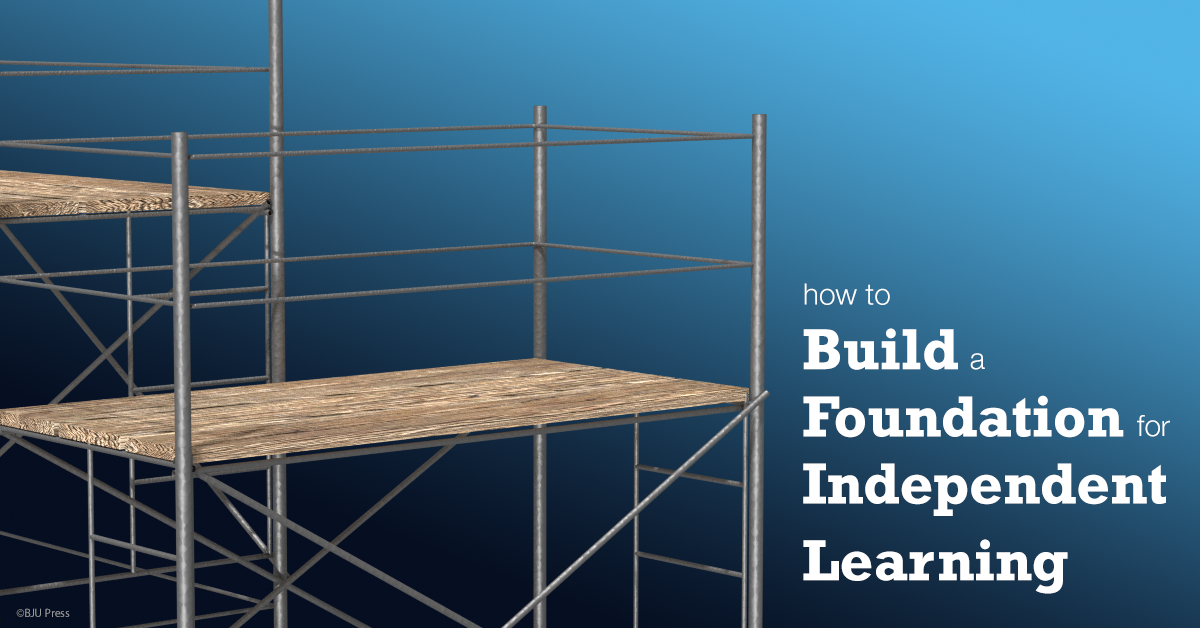As much as you may love being a part of your child’s daily walk with God and carefully teaching him to seek God, it has always been your goal as a parent to carefully guide him to a place where he will be able to seek God on his own. You won’t always be standing over his shoulder and telling him what decisions he needs to make—as much as you might want to.
One day, your child’s relationship with the Lord will be his own responsibility. Education is no different. Just as you want your children to be capable of making right choices on their own, you want them to be able to learn on their own.
The process of developing a child into an independent learner is sometimes called “scaffolding.” Often when you see a building under construction, you also see scaffolding around it. The wooden or metal framework supports the workers as they build the structure itself. For example, a bricklayer stands on a scaffold as he works on the exterior walls of a building. Though essential to the construction process, the scaffolding is only temporary.
Scaffolding in education works the same way. The teacher or parent provides support and makes connections to help learners continue making progress independently. Here are a couple of ways you can help your children become independent learners.

Help them make connections between old and new information
Have you ever told a funny story only to get to the end and realize that no one’s laughing? And then you remembered one small but crucial detail that changed everything about the story and made it funny?
One of the most important elements for any lesson is appropriate background information—which can sometimes be that small but crucial missing detail that keeps your children from understanding a new concept—like knowing a particular word’s definition before you can understand a scientific law. If they have all the information but still don’t understand, help them make the connection between what they already know and what they need to learn.
Sometimes, this part of scaffolding is as simple as reminding your children of the necessary information. Other times, it might mean referring back to previous discussions or asking a specific question about the missing information. You could also use graphic organizers, word webs, vocabulary lists, or even a metaphor to help make connections to ideas your children already understand, such as the comparison between your child’s growing faith and his education, or the funny story with the missing detail.
Help them discern how they learn best
Once your children have made the connection they were missing before, look back and see what methods helped them find it. Did a graphic organizer help them understand what a verb does? Or did using a word web help them brainstorm for a writing project? Teach them to look for those methods and apply them the next time they don’t understand a new concept.
Scaffolding isn’t a list of tools to use all the time. It’s a process for reaching the specific goal of making sure your children can learn independently. BJU Press Teacher’s Editions are full of resources that can help you scaffold your children’s learning.
Check out our TEs for science or English for some extra resources that will help your children become independent learners!